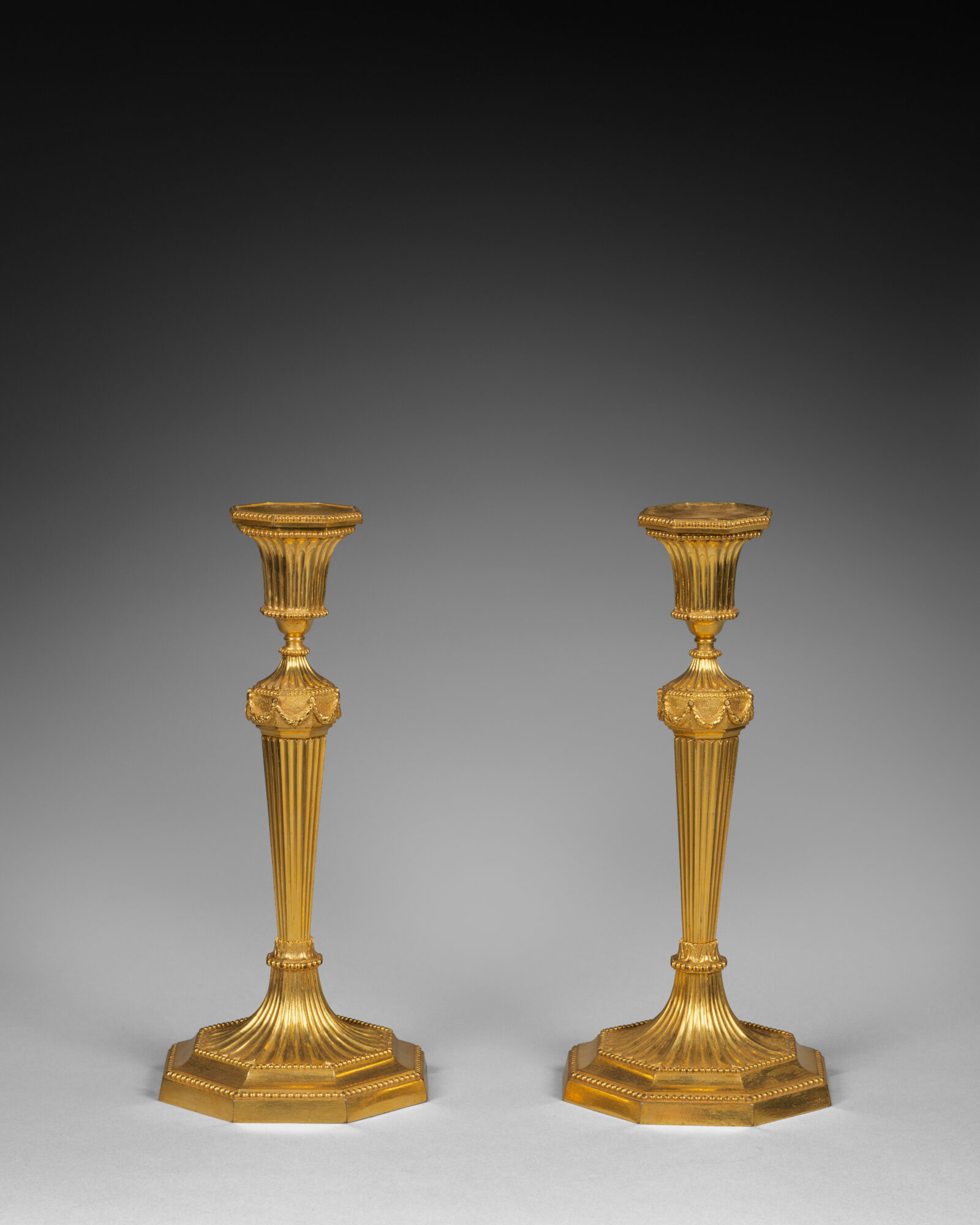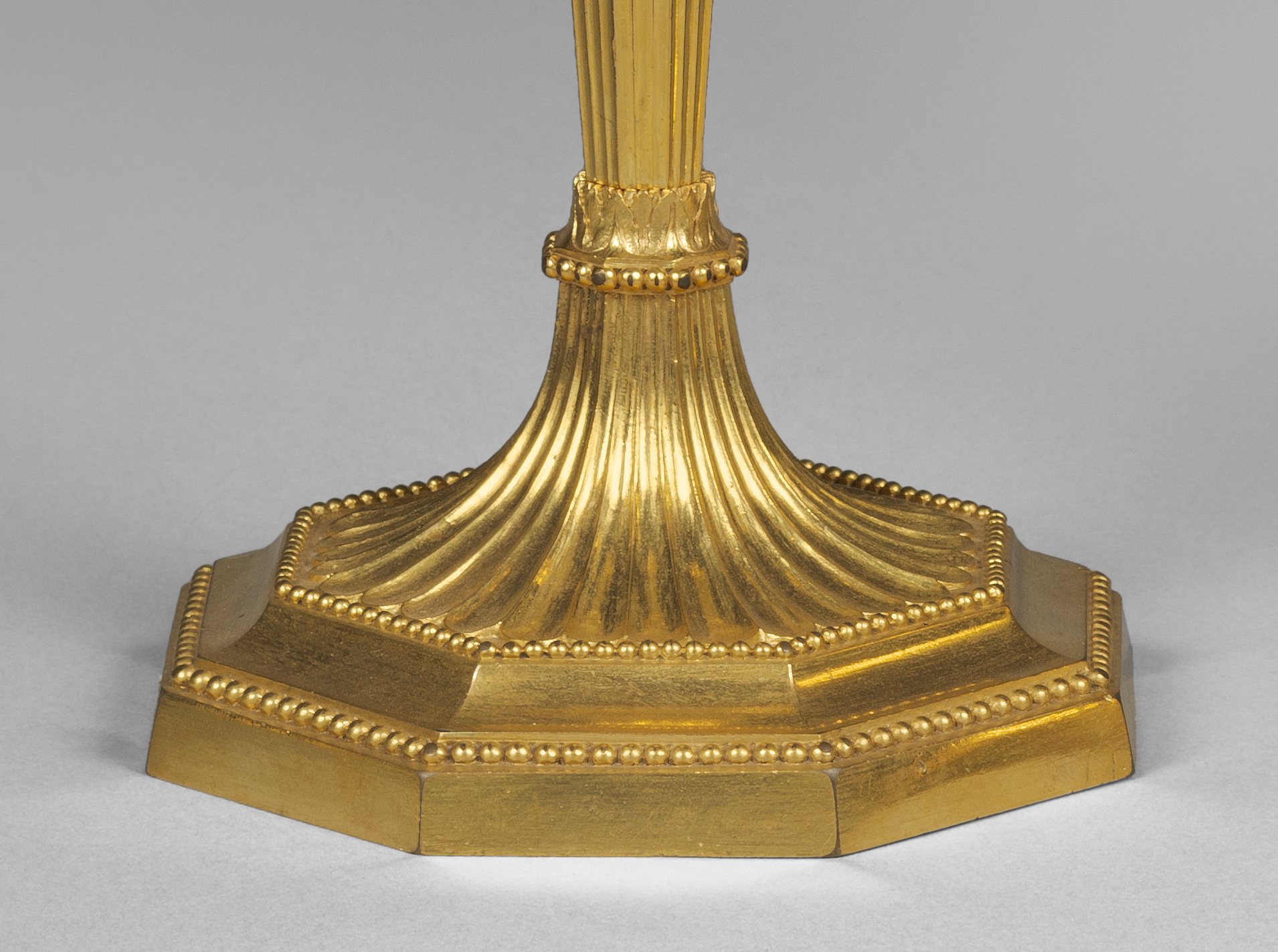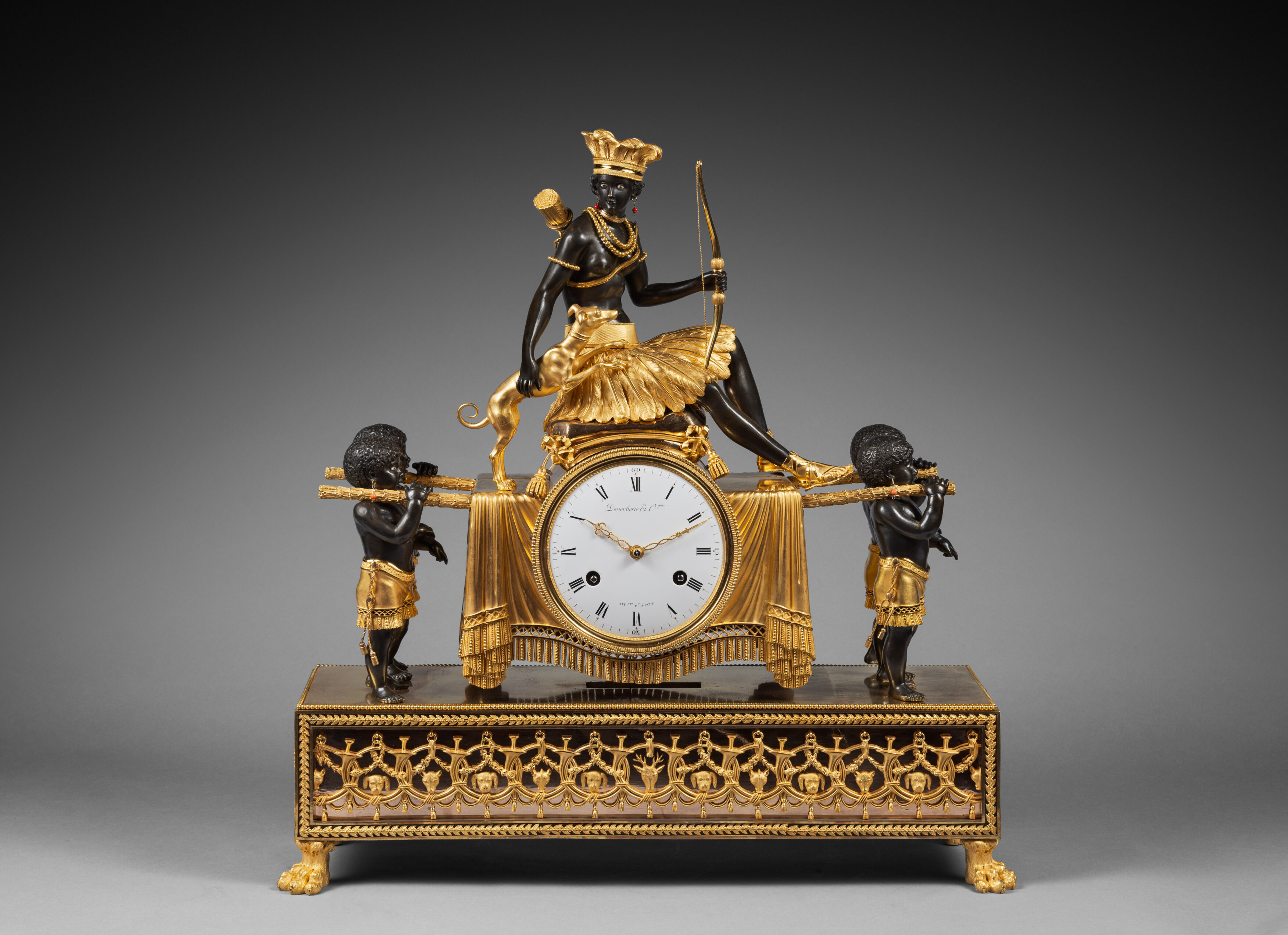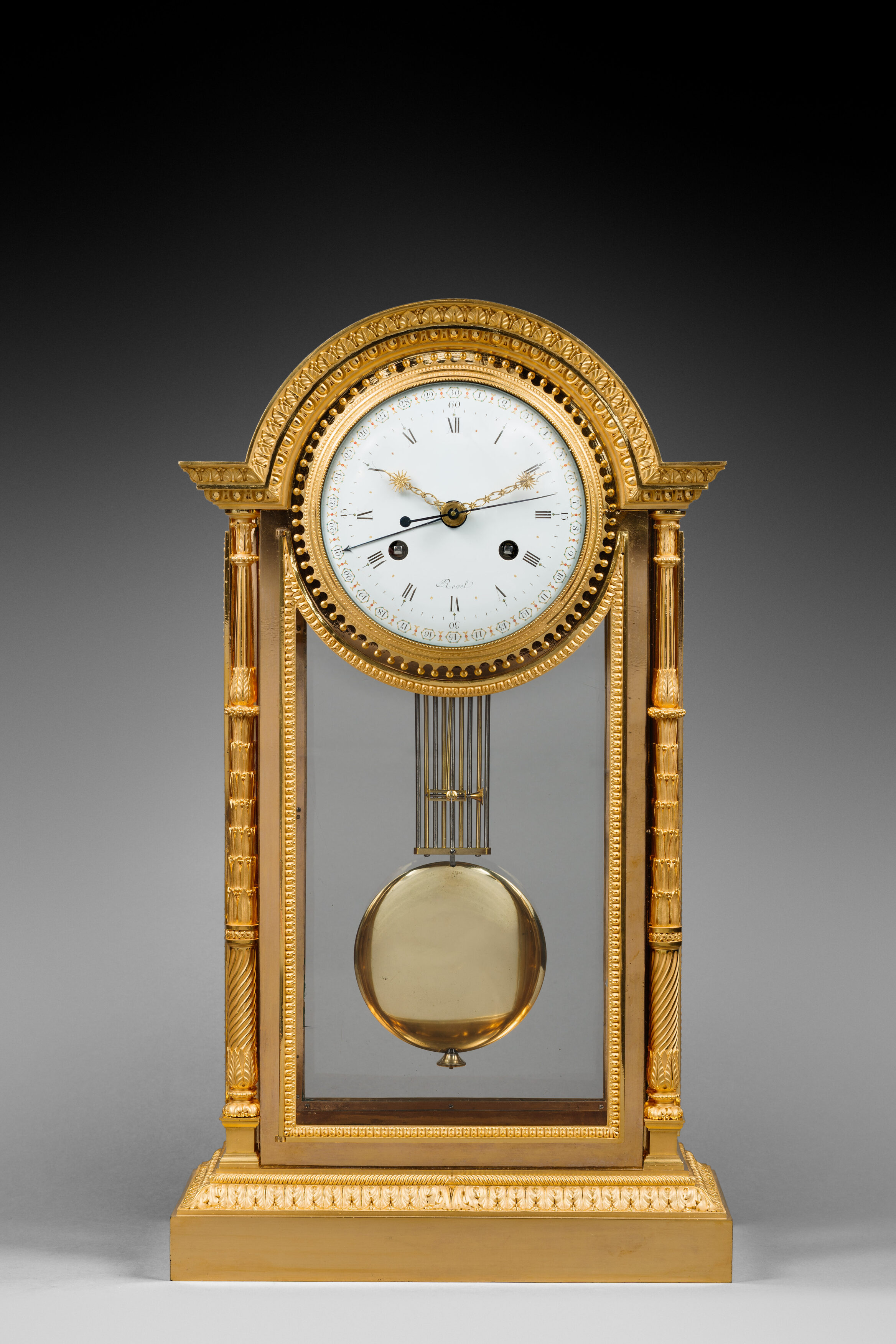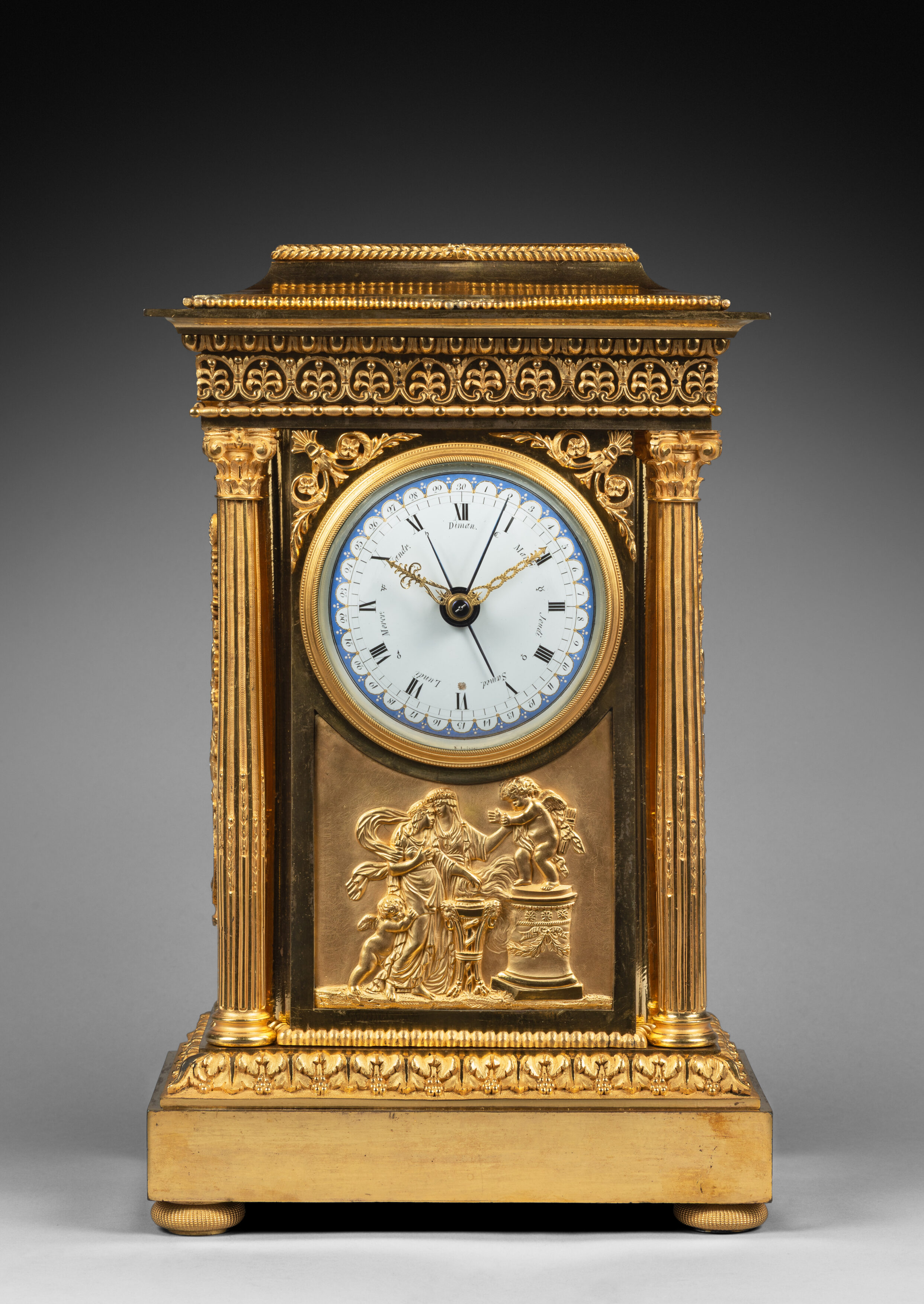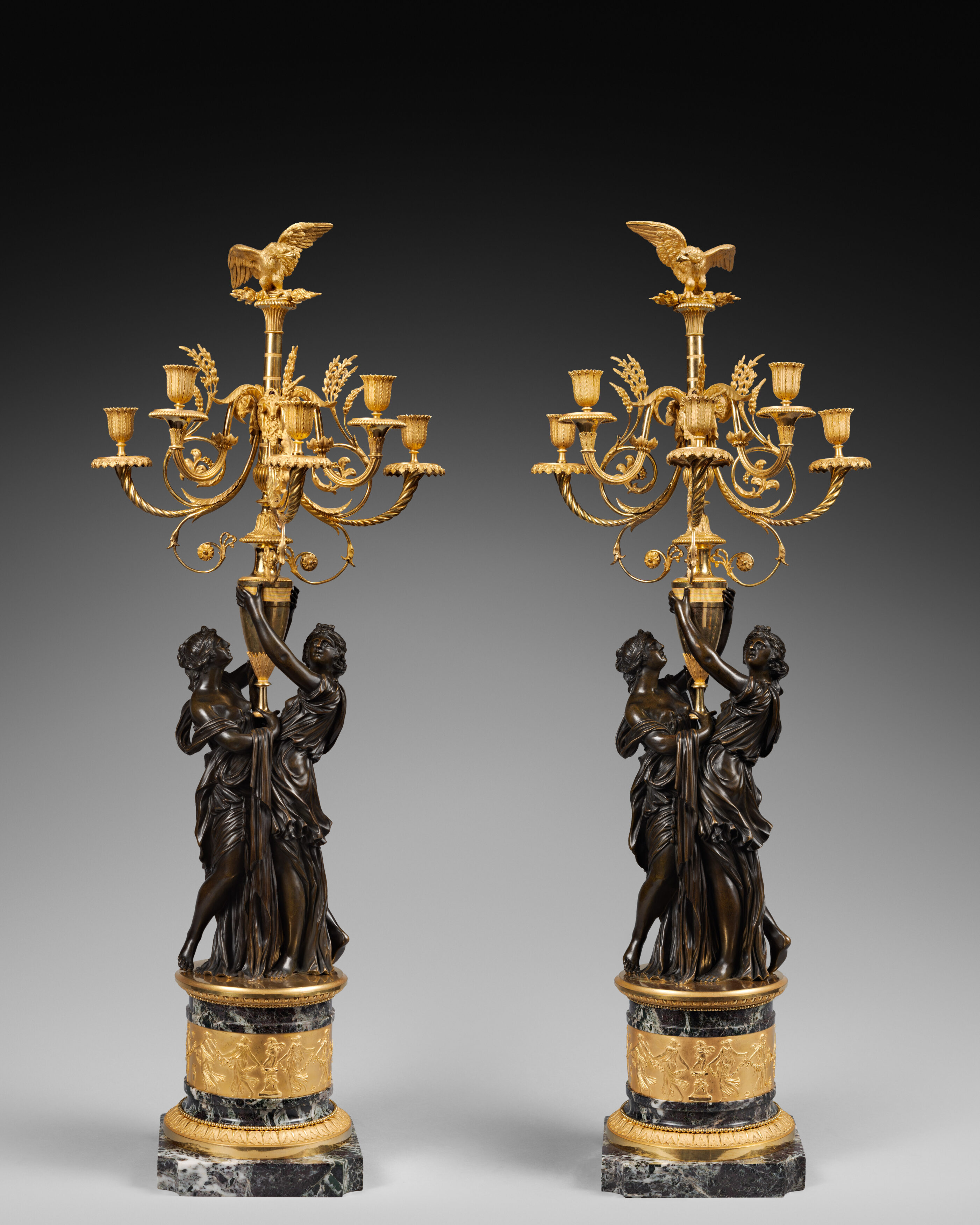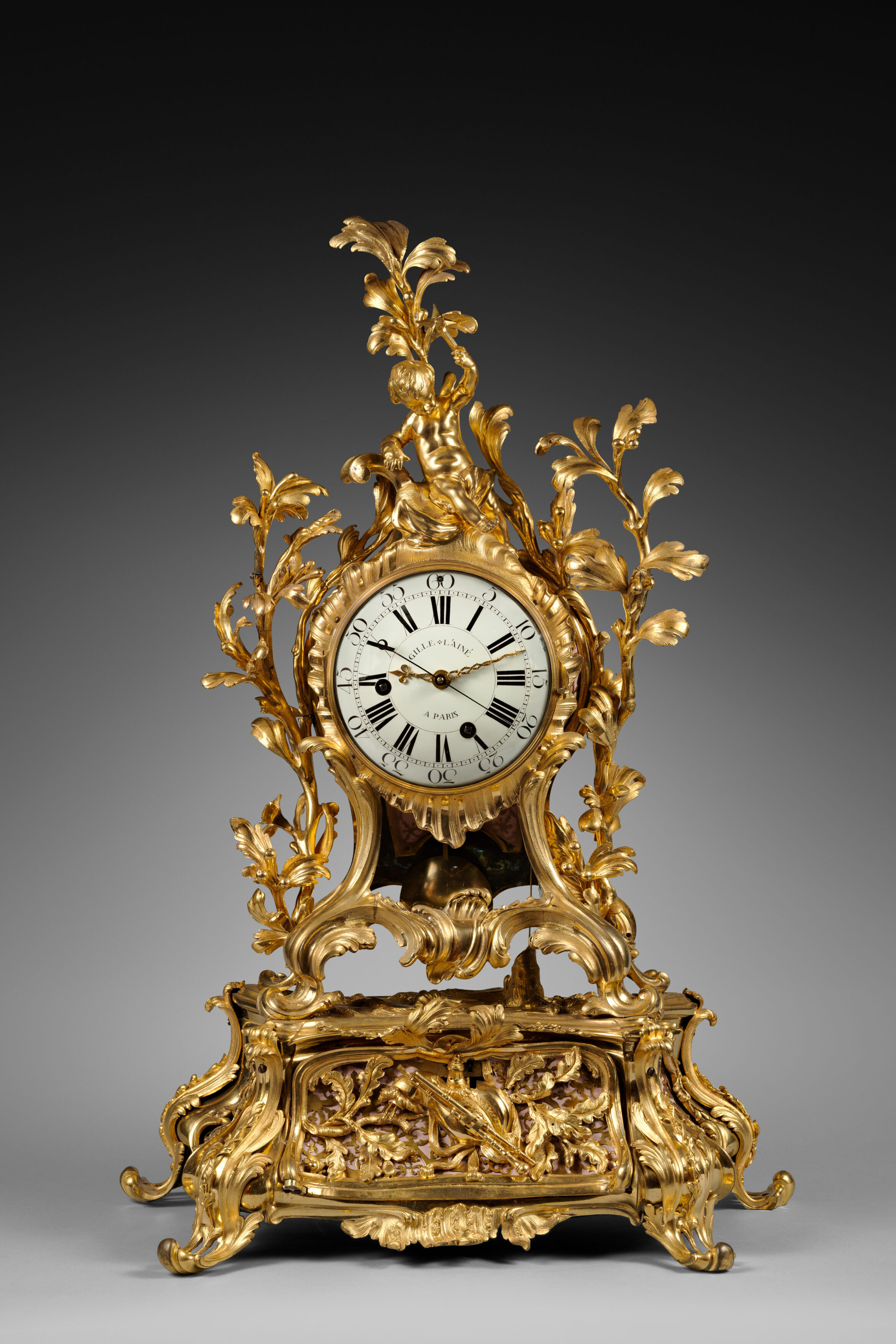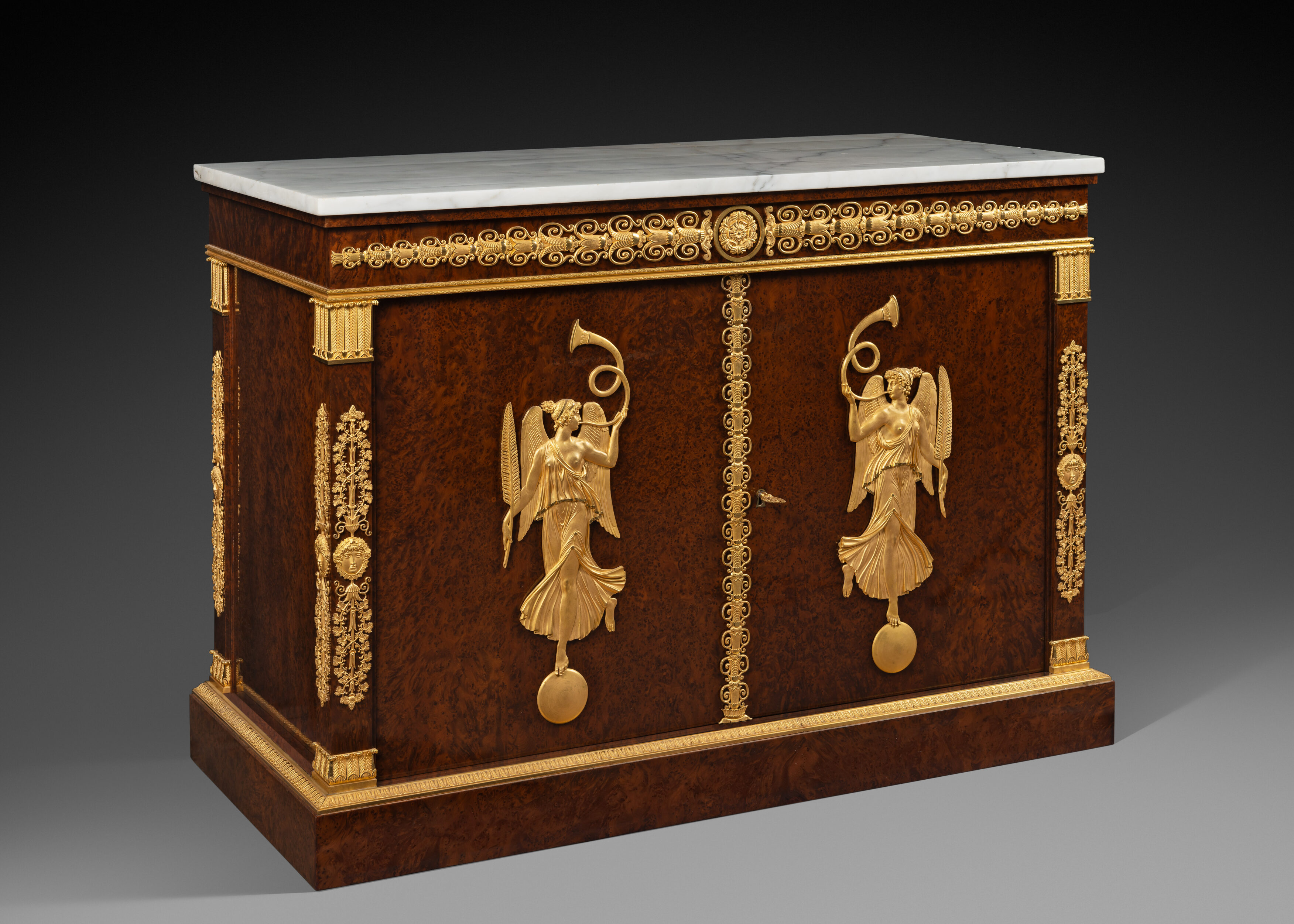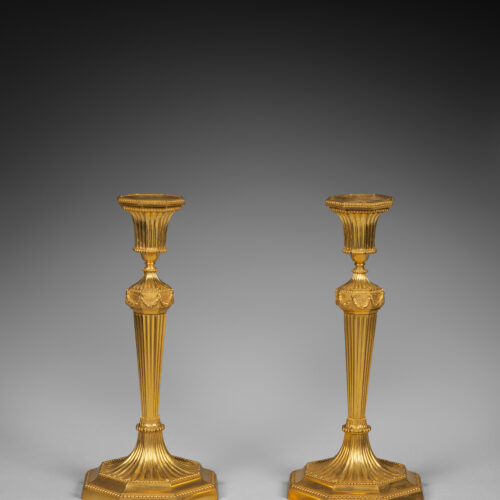Rare Pair of Gilt Bronze Candlesticks with Matte and Burnished Finishing
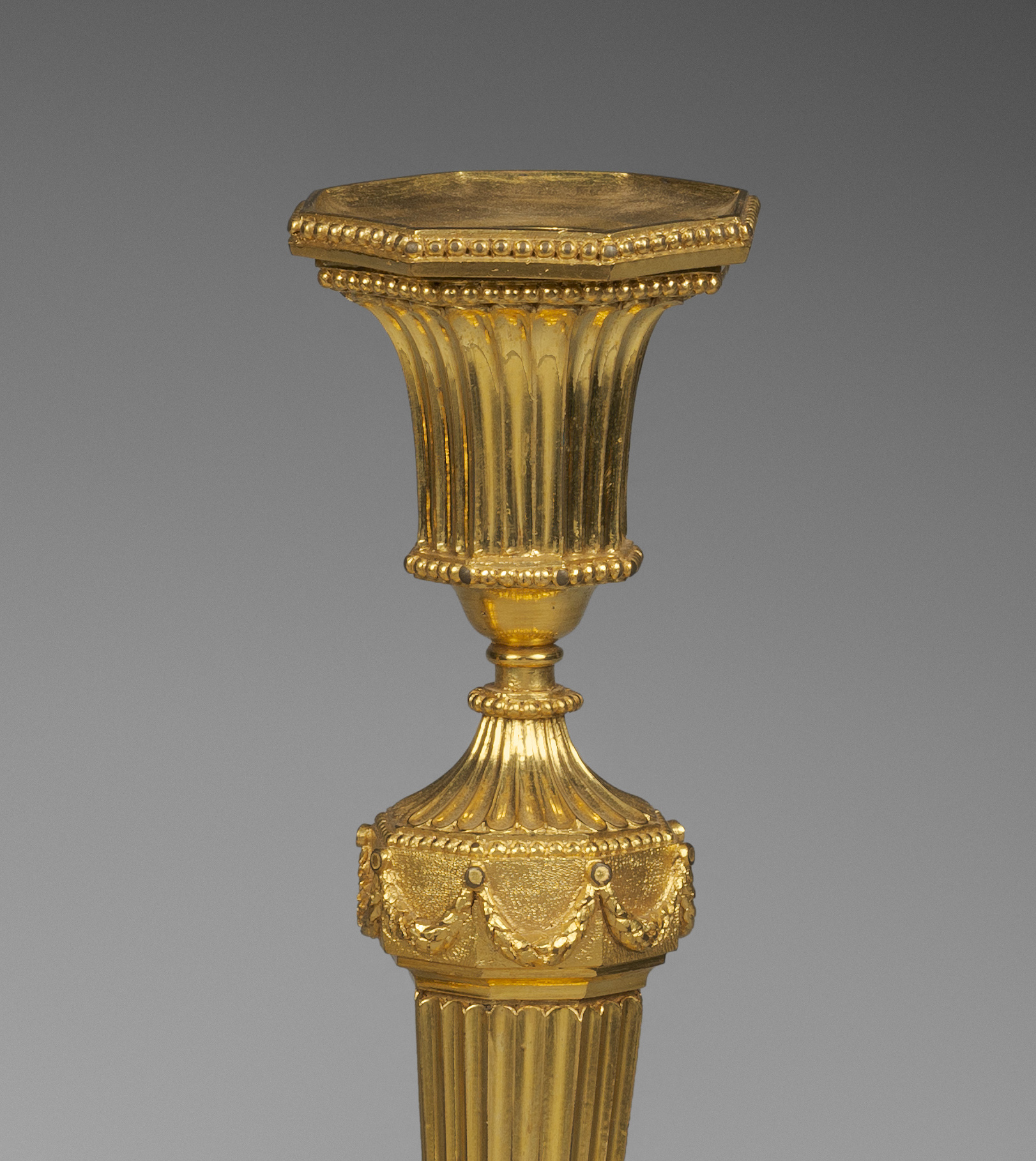
France or England, Directoire period, circa 1795.
The present pair of large candlesticks is made of finely chased gilt bronze with matte and burnished finishing. The candlesticks feature tall, tapering octagonal stems adorned with fluting that emerge from a bouquet of leaves resting on a bead-decorated ring that is surmounted by a faceted knop adorned with leafy garlands suspended from roundels, against a matted ground. A bead-decorated knop supports the tapered vase-shaped nozzle that is fluted and decorated with beadwork. The drip-pans are also adorned with bead friezes. The terrace is decorated with elongated egg-and-dart friezes and rests on a molded, bead-adorned plinth, which in turn is set on an octagonal base.
The remarkable design of the present rare pair of candlesticks was inspired, in part, by the work of Parisian ornamentists of the reign of Louis XVI, and particularly that of Jean-Charles Delafosse (see G. Henriot, Le luminaire, de la Renaissance au XIXe siècle, 1933, plate 169). However, However, it also foreshadows models that were to become fashionable during the Napoleonic era. It is thus a rare example of a piece made during the Directoire, a particularly short period in the 18th century European decorative arts, which occurred, in France, in the final decade of the century. During that period, there was an esthetic transition between the elegant neoclassical style of the latter part of the reign of Louis XVI and the more assertive, masculine style of the Imperial period. Among the comparable models made in France during the Empire period, one pair, which was delivered in 1809 by bronze caster Claude Galle, was intended for the Grand Trianon (illustrated in M-F. Dupuy-Baylet, L’Heure, Le Feu, La Lumière, Les bronzes du Mobilier national 1800-1870, Dijon, 2010, p. 65). A second pair, with octagonal stems, drip pans, and bases, was mentioned in an 1807 inventory as standing in the Salle du Conseil of the Château of Fontainebleau (see J-P. Samoyault, Musée national du château de Fontainebleau, Catalogue des collections du mobilier, 1-Pendules et bronze d’ameublement entrés sous le Premier Empire, RMN, Paris, p. 194, catalogue n° 181).
In the interest of exhaustivity, it should be noted that this pair of candlesticks may have been made in England. For while Parisian bronze casters were predominant in the European decorative arts throughout the 18th century and the early decades of the following century, there were also notable English bronziers, or bronze casters who worked on England, such as Alexis Decaix (active circa 1794-1811). Decaix was a French artisan who emigrated to London after the Revolution. Matthew Boulton (1728-1809), an industrialist and talented bronze caster, opened a manufactory in Soho, near Birmingham, which produced goods of remarkable quality and originality. Both men might have made candlesticks similar to the present pair. In addition, it should be noted that several examples of English candlesticks, quite similar in design, are known; these are often made of silver. One pair of candlesticks made of a copper and silver alloy is pictured in Jonathan Bourne and Vanessa Brett, L’art du Luminaire, Editions Flammarion, Paris, 1992, p. 117, fig. 390.

